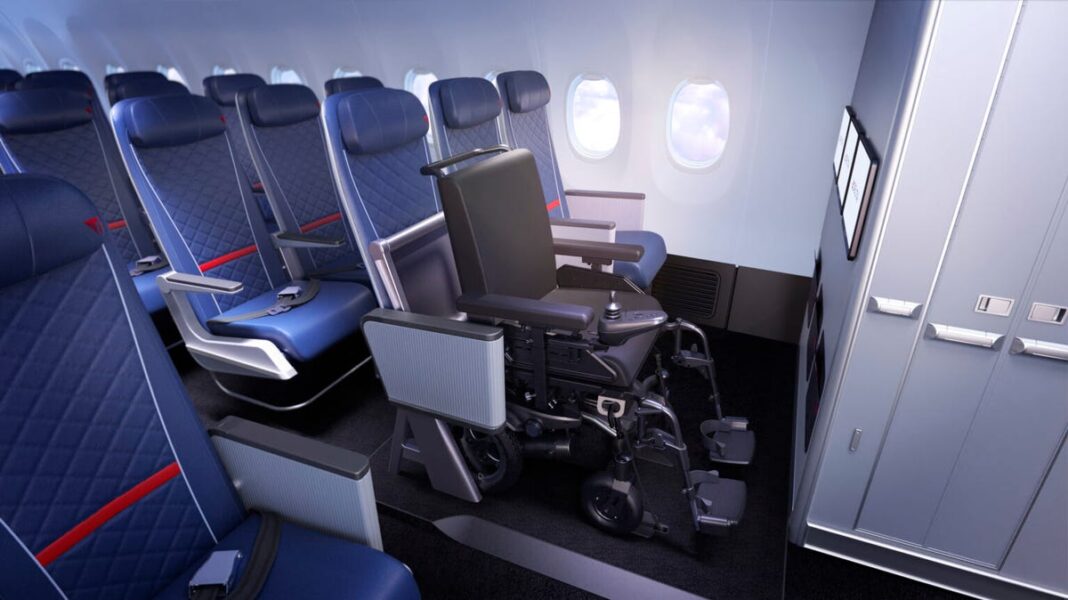Delta Air Lines and DOT Announce Plans for Adaptive Wheelchair Seating on Future Flights
A long-anticipated aspiration for travelers with disabilities is on the verge of becoming a reality. Both the Department of Transportation and Delta Air Lines have confirmed that they are working to enable passengers who use wheelchairs to fly while remaining in their own seats.
“This is the moment we have been waiting for. I am ecstatic,” remarked Sophie Morgan, the founder of the Rights on Flights campaign, in a statement. “This is the first step on a long journey towards meaningful change. We now urge all airlines to embrace this initiative and transform the travel experience for wheelchair users.”
As Morgan emphasized, this issue has been paramount for numerous disability advocates.
According to DOT statistics, U.S. airlines damage or destroy between 10,000 to 15,000 wheelchairs and mobility devices annually. Many advocates have previously told YSL News that allowing disabled travelers to stay in their wheelchairs instead of checking them is essential for making travel more accessible.
“This has been a 15-year journey of relentless effort to bring this closer to reality,” expressed Michelle Erwin, CEO of All Wheels Up, an advocacy organization for disabled travelers. “We are deeply thankful for the support from various stakeholders, particularly (Paralyzed Veterans of America) and (the National Institute for Aviation Research), which helped us reach this pivotal moment. There’s still much to be done, but the question now is not if or how, but when.”
The Department of Transportation has confirmed that concepts for securing wheelchairs inside the cabin are already moving through the approval process.
“At Secretary Buttigieg’s direction, the FAA has been researching how to install wheelchair restraint systems inside aircraft cabins, allowing passengers to travel in their own wheelchairs,” stated DOT spokesperson Sean Manning to YSL News. “Currently, the FAA has not found any significant installation issues, and solutions for any minor concerns are being developed. We are pleased to announce that the FAA plans to assess the feasibility of using wheelchairs on planes by the end of 2025.”
However, travelers should not expect to fly in their wheelchairs by next year. Once the FAA and DOT establish technical feasibility, airlines will require additional time to equip their aircraft with the new seating and obtain the necessary approvals for these accommodations.
The DOT is reviewing the possibility of mandating airlines to incorporate such equipment once it is approved, but that will follow a separate process.
“The DOT will also conduct a study to evaluate the economic and financial viability of airlines accommodating passengers with wheelchairs in the main cabin during flights, as mandated by the FAA Reauthorization Act of 2024,” Manning’s statement continued. “Following the study’s findings, the DOT may pursue a negotiated rulemaking to permit passengers to remain in their wheelchairs throughout the flight.”
Nonetheless, these changes might occur relatively quickly by airline standards.
Delta Flight Products showcased an initial concept for in-cabin wheelchair travel at the Aircraft Cabin Interiors Expo in Hamburg in 2023 and presented an updated model at the same event in 2024.
A representative from Delta stated that the airline has already sought approval to begin modifying its aircraft for these new seats once the FAA completes its preliminary review.
“The applications from Delta Flight Products to enable this groundbreaking seating to be fitted on planes marks a significant milestone towards making air travel more inclusive for everyone,” said a statement from Delta. “Delta has consistently led efforts to enhance accessibility in air travel and will keep investing in technology and innovations that cater to all customers.”
Typically, the process for airlines to update their cabin layouts takes several years. For instance, Delta has indicated it could take up to seven years to complete a different cabin refresh it is currently undertaking, but if everything proceeds as planned, disabled travelers might be able to regularly fly in their wheelchairs on commercial flights by the decade’s end.

